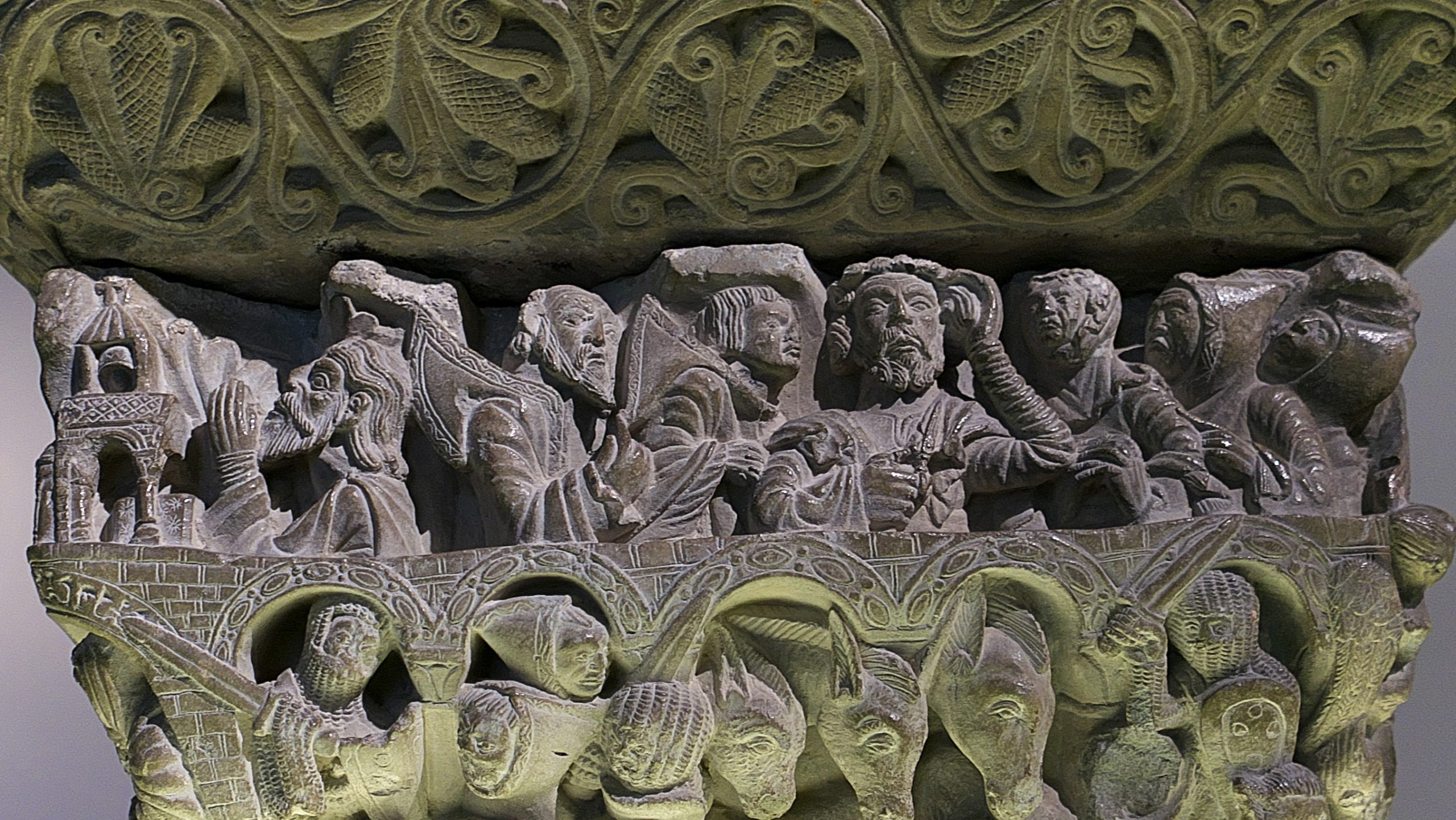
Job 19:23-27a
Ordinary C50
23 “O that my wordsA wereB written down!C
O that they were inscribedD in a book!E
24 O that with an ironF penG and with leadH
they were engravedI on a rockJ forever!K
25 For I knowL that my vindicatorM livesN
and that in the endO he will standP upon the earth;Q
26 and afterR my skinS has been destroyed,T
then in my fleshU I shall seeV God,W
27 whom I shall see on my side,
and my eyesX shall behold,Y and not another.Z
My heartAA faintsBB withinCC me!
Image credit: “Navarre Museum. Master of the cloister of the cathedral of Pamplona. Historiated capital on the Story of Job. From the cloister of the Romanesque cathedral of Pamplona (ca. 1130-1140).” Photo by Jl FilpoC, 2019.
